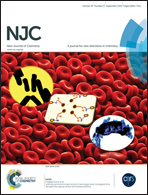Theoretical study on homolytic C(sp2)–O cleavage in ethers and phenols†
Abstract
The C–O homolytic bond dissociation enthalpies (BDEs) of many ethers were calculated by high-level ab initio methods including G4, G3, CBS-Q, CBS-4M as well as 26 density function theory (DFT) methods. Among the DFT methods, wB97 provided the most accurate results and the root mean square error (RMSE) is 9.3 kJ mol−1 for 72 C–O BDE calculations. Therefore, extensive C(sp2)–O BDEs and the substituent effect of alkenyl ethers, para-position phenyl ethers/phenols as well as several typical heterocyclic ethers were investigated in detail by wB97 methods, which is important for the understanding of the chemical process involved in the cross-coupling reactions. For alkenyl ethers, the different substituents exhibited significant effects on C(sp2)–O BDEs, especially, the conjugate effect of the substituents on the O atom can greatly decrease the C(sp2)–O BDEs. In addition, the NBO analysis produced good linear correlations between the C(sp2)–O BDEs and qC × qO values (the qC and qO values denoted the natural charge of C and O atoms of the C–O bond, respectively). For para-position phenyl ethers and phenols, excellent linear relationships between the C(sp2)–O BDEs with substituent constant σp+ are found. Further discussion of the substituent effect separated into the ground effect and the radical effect can further help us to understand the essence. For several five-membered typical heterocyclic ethers, a larger bond angle change will lead to a smaller C–O BDE.


 Please wait while we load your content...
Please wait while we load your content...